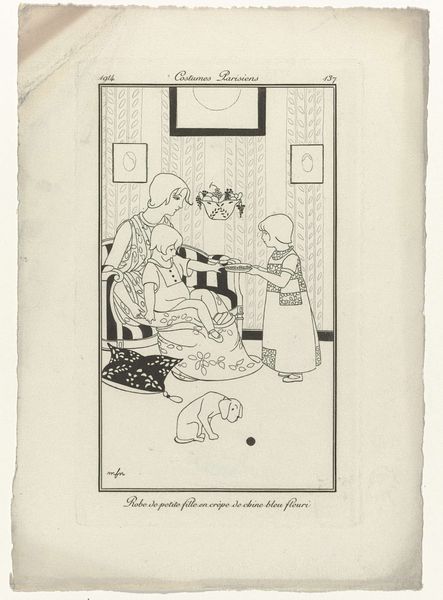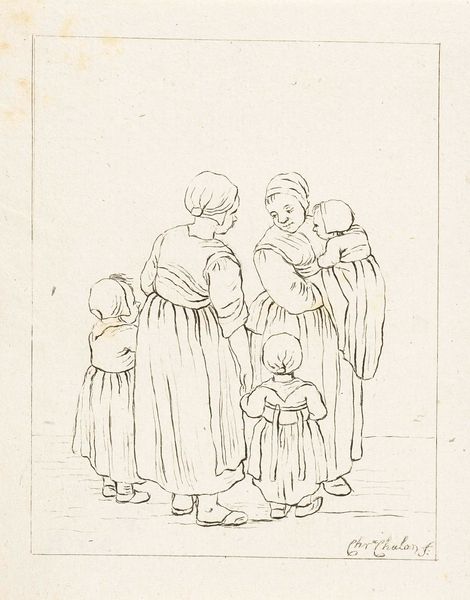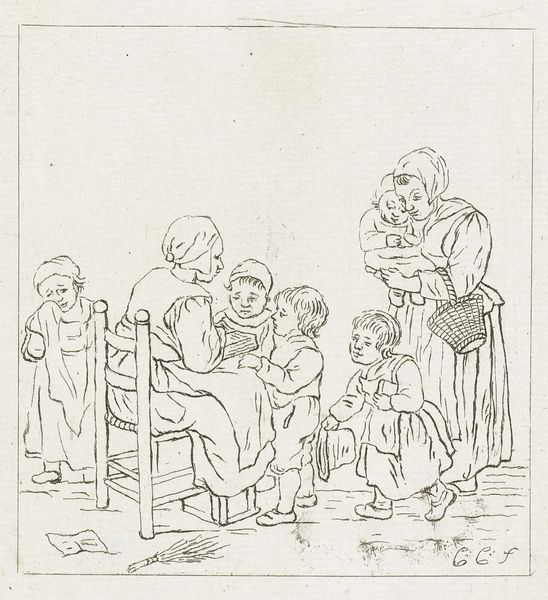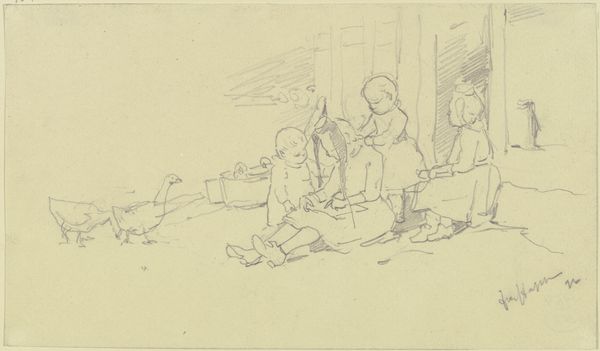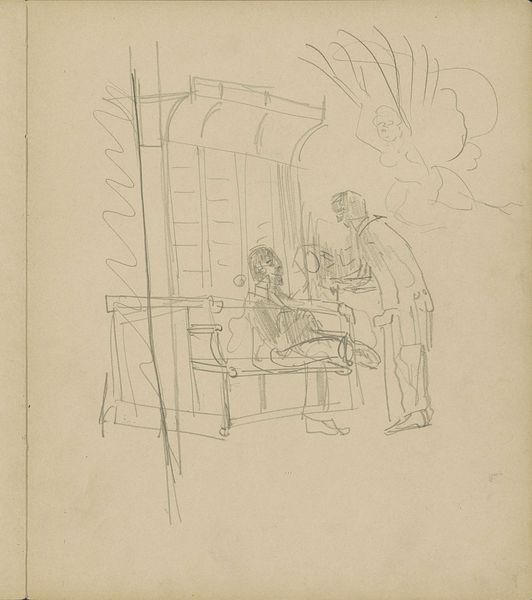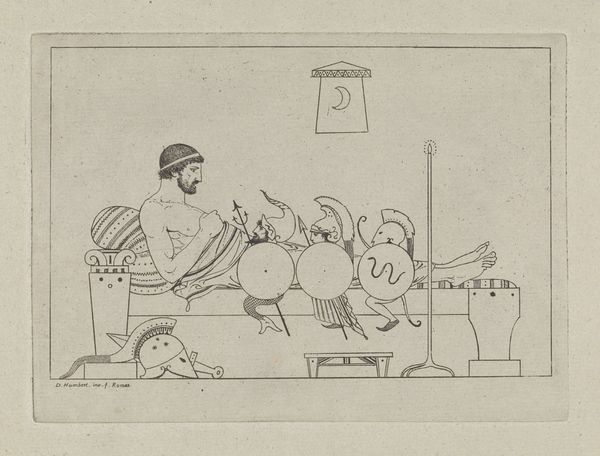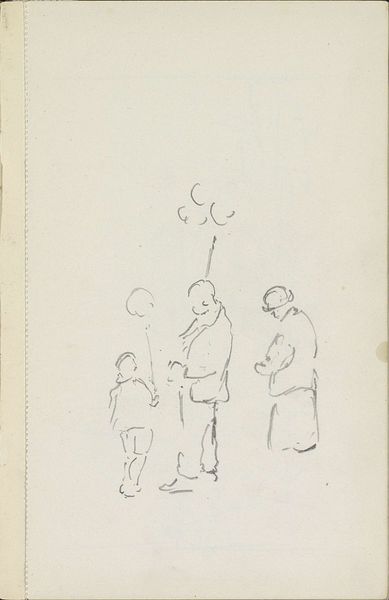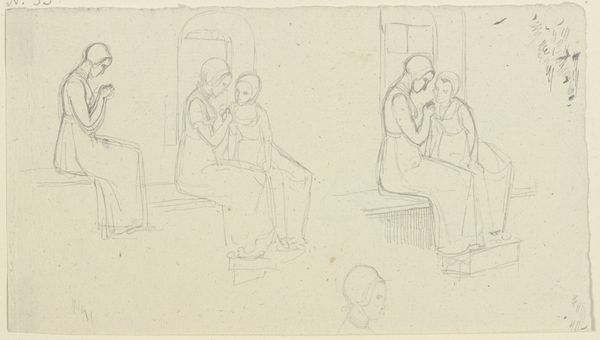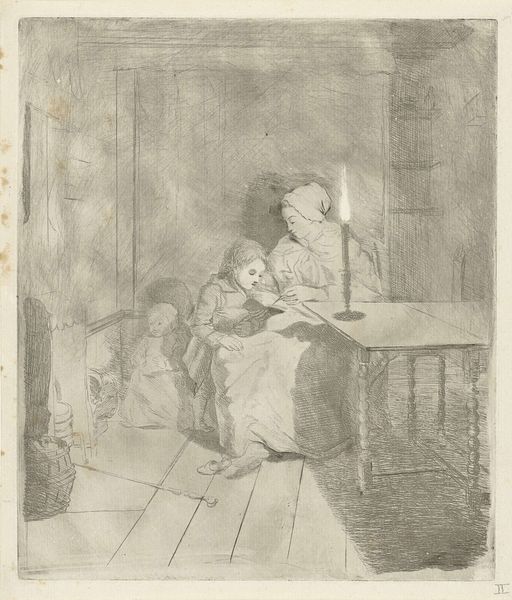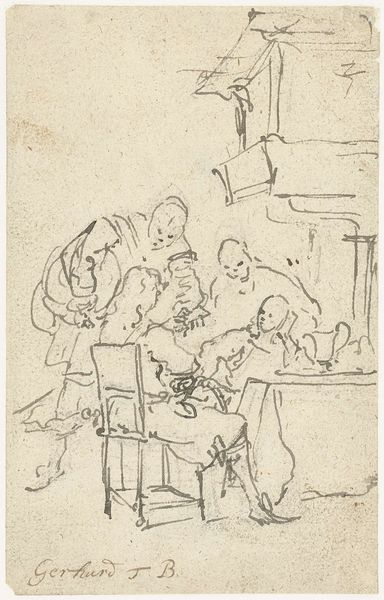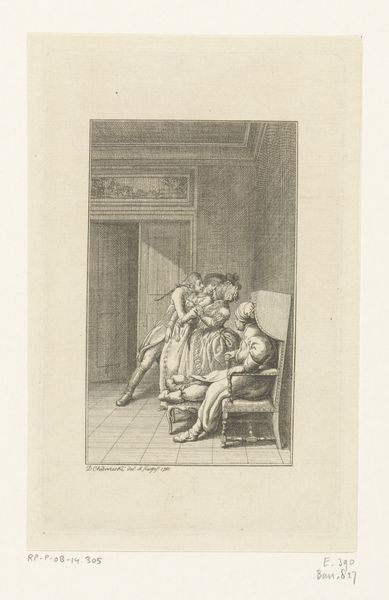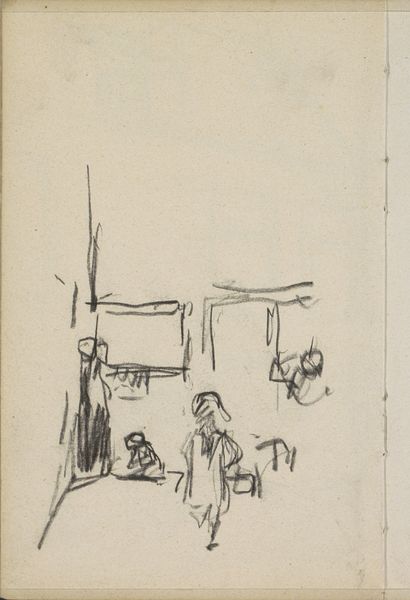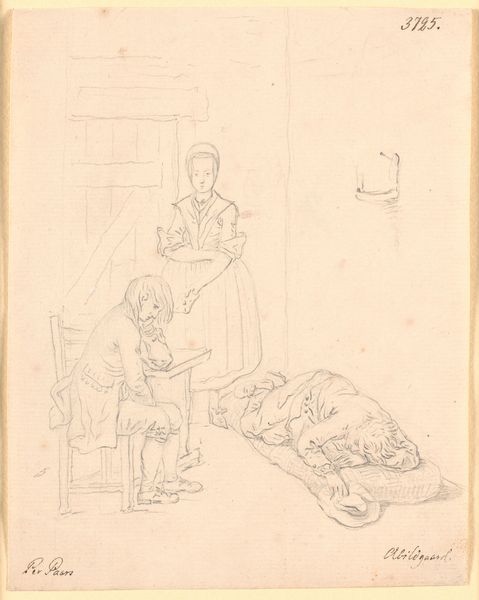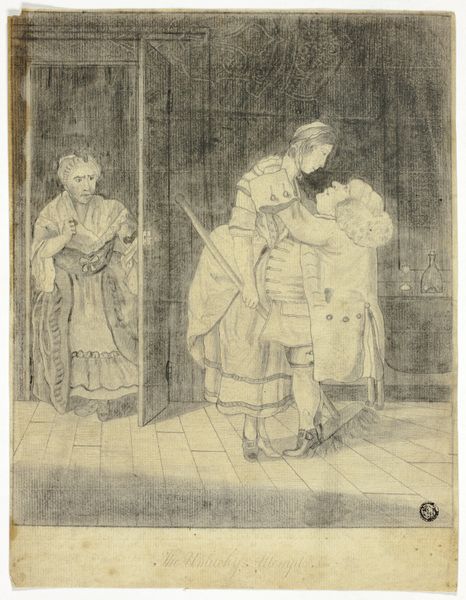
drawing, paper, ink
#
portrait
#
drawing
#
art-nouveau
#
blue ink drawing
#
paper
#
ink
#
child
#
sketchbook drawing
#
genre-painting
Dimensions: height 226 mm, width 147 mm
Copyright: Rijks Museum: Open Domain
Curator: This ink drawing by Frits Lensvelt, around 1910, is titled "Old Man and Woman and Children around a Stove." It feels rather stark at first glance, wouldn’t you agree? Editor: It does. And the first thing that struck me is the simplicity of the lines. There's an almost childlike quality to the depiction of family life. But look closer, and you see so much encoded in the imagery of this small composition. Curator: Precisely. While stylistically connected to Art Nouveau, the scene depicts a far less idealized reality. The stove, centrally positioned, immediately symbolizes the heart and literal warmth of a domestic space in presumably modest settings. Note its imposing presence, virtually anchoring all family members. Editor: Absolutely, and I can't ignore the presence of food simmering on that stove. It brings me back to familiar themes—comfort, security, the elemental act of nurturing, with archetypes from our childhood. Do you see that the man figure hovers right beside it, while the woman sits closer to the children? Lensvelt captures here traditional family roles as reinforced in many societies. Curator: These divisions seem consistent with a society deeply structured by gender. Notice how the woman is visually linked with domesticity through the stove, window in the background, and direct care for children? The distribution of bodies implies social expectations and responsibilities within the domestic sphere. Editor: I find myself focusing on those big heads of the characters. In the case of the adult, a way to signify, perhaps, experience and responsibility. And the almost eerie rendering of these figures recalls the ways childhood innocence confronts an ever-looming darkness. But ultimately, the message that stays with you is about home. Curator: This brings up crucial question about who creates history. While depicting intimate spaces and mundane tasks, pieces like Lensvelt’s quietly resist the glorification of traditional history centered on powerful people and extraordinary actions. This sketchbook-like glimpse into private existence captures, perhaps inadvertently, more nuanced insights. Editor: Yes. It is in that candid capturing that true feelings hide and manifest across time. Looking at it again, the symbols of 'warmth', 'care', 'tradition' are undeniably dominant in Lensvelt’s art—even when wrapped in that sketchy rendition. Curator: Well, these subtleties render "Old Man and Woman and Children around a Stove” relevant for today’s visitors, perhaps resonating far more powerfully now than when it was first conceived. Editor: Indeed. Its symbols carry on affecting how we remember and re-evaluate our common heritage.
Comments
No comments
Be the first to comment and join the conversation on the ultimate creative platform.
